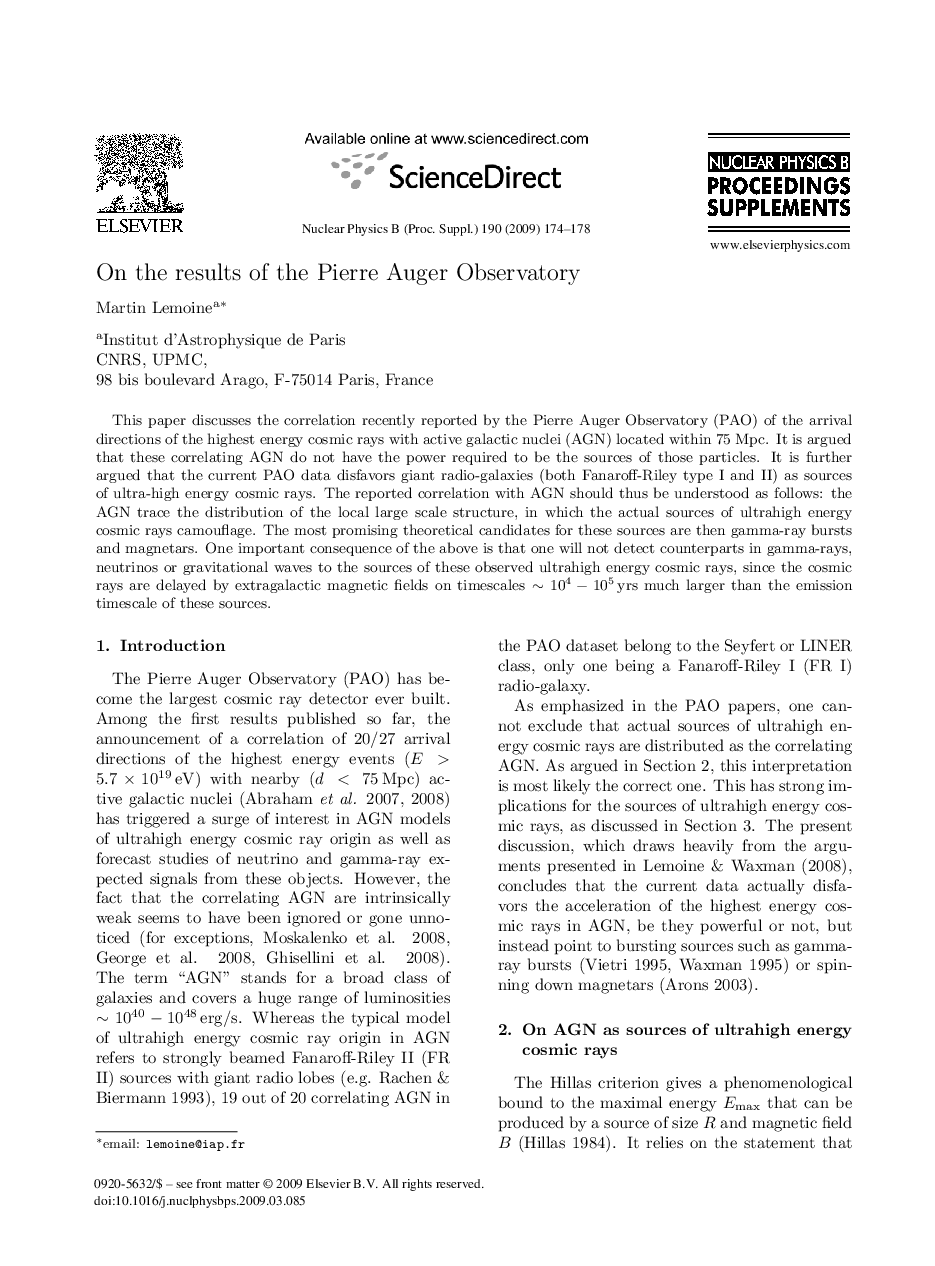| Article ID | Journal | Published Year | Pages | File Type |
|---|---|---|---|---|
| 1847895 | Nuclear Physics B - Proceedings Supplements | 2009 | 5 Pages |
This paper discusses the correlation recently reported by the Pierre Auger Observatory (PAO) of the arrival directions of the highest energy cosmic rays with active galactic nuclei (AGN) located within 75 Mpc. It is argued that these correlating AGN do not have the power required to be the sources of those particles. It is further argued that the current PAO data disfavors giant radio-galaxies (both Fanaroff-Riley type I and II) as sources of ultra-high energy cosmic rays. The reported correlation with AGN should thus be understood as follows: the AGN trace the distribution of the local large scale structure, in which the actual sources of ultrahigh energy cosmic rays camouflage. The most promising theoretical candidates for these sources are then gamma-ray bursts and magnetars. One important consequence of the above is that one will not detect counterparts in gamma-rays, neutrinos or gravitational waves to the sources of these observed ultrahigh energy cosmic rays, since the cosmic rays are delayed by extragalactic magnetic fields on timescales ∼104–105 yrs much larger than the emission timescale of these sources.
